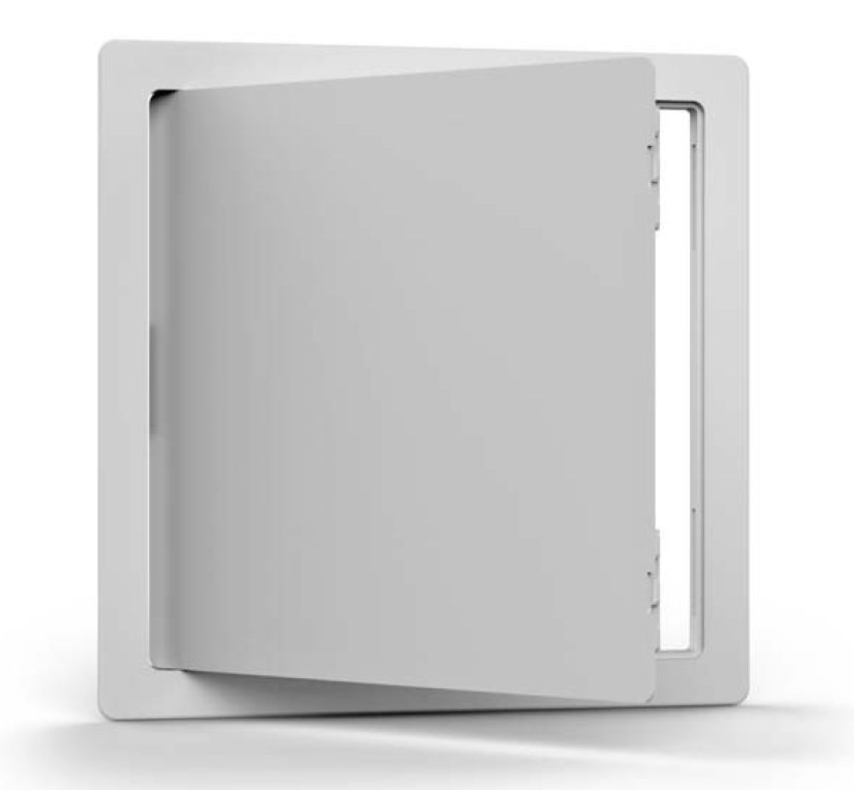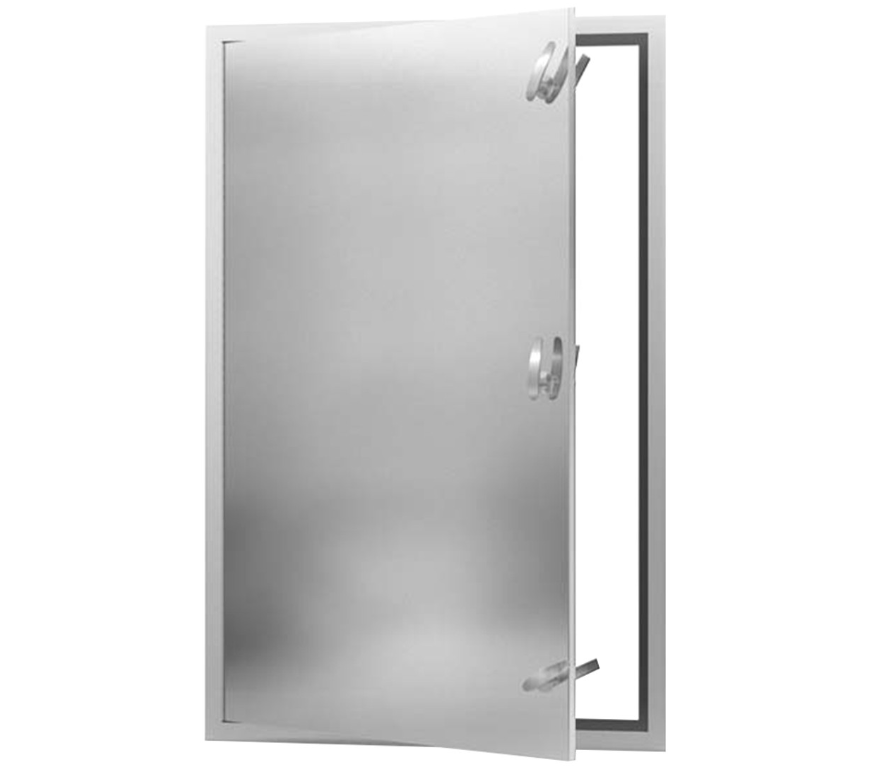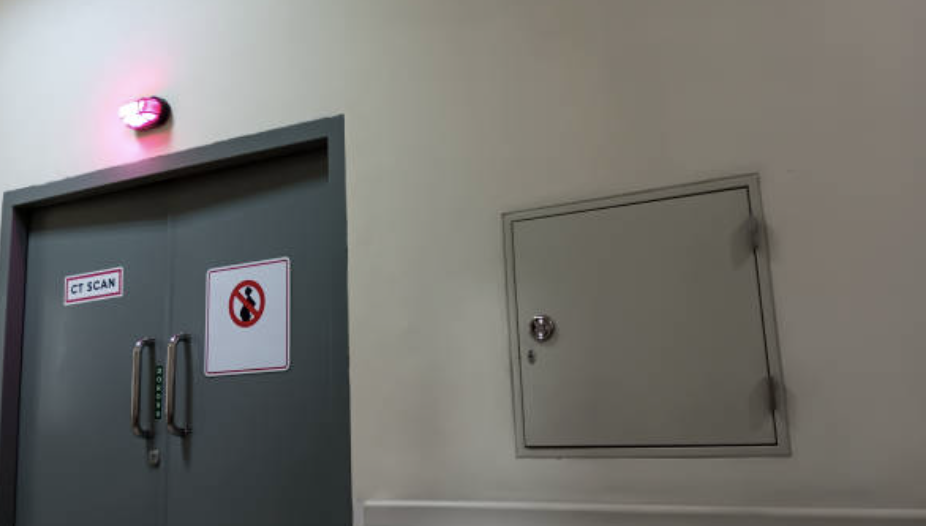Posted by Spycor LLC on Mar 20th 2025
In modern construction, access doors play a crucial role in maintaining and servicing building systems while keeping spaces aesthetically pleasing. Whether in commercial or residential properties, these doors provide convenient access to electrical, plumbing, HVAC, and mechanical components hidden behind walls, ceilings, or floors. From fire-rated access doors to drywall access panels, choosing the right type can improve safety, security, and efficiency.
This comprehensive guide explores the benefits of installing access doors, the different types available, and why they are essential for both home and business owners.

What Are Access Doors?
Access doors are specially designed panels installed in walls, ceilings, floors, or enclosures that allow entry to concealed building systems. They provide a convenient way to access essential components for maintenance and repairs without requiring extensive demolition.
Common Applications of Access Doors
-
Electrical Systems – Provide access to wiring, circuit breakers, and control panels.
-
Plumbing Systems – Allow easy inspection of pipes, valves, and drainage systems.
-
HVAC Systems – Help maintain heating, ventilation, and air conditioning equipment.
-
Security & Storage – Conceal valuables or restricted areas.
-
Fire Safety – Offer fire-resistant barriers for enhanced protection.
Types of Access Doors and Their Benefits
Access doors come in various types, each designed for specific applications. Below are the most common categories:
1. Fire-Rated Access Doors
Fire-rated access doors are designed to slow the spread of fire and smoke, ensuring safety and compliance with building codes. These doors can withstand high temperatures for a specified period, typically ranging from 45 minutes to 3 hours.
Benefits:
-
Enhances fire safety and meets building regulations.
-
Protects assets by containing fire within designated areas.
-
Provides easy access to fire suppression systems and electrical panels.
2. Drywall Access Panels
Drywall access panels are designed to blend seamlessly into drywall surfaces while providing concealed access to wiring, plumbing, or HVAC components.
Benefits:
-
Maintains the aesthetics of interiors by blending with the wall.
-
Allows quick and easy access for maintenance.
-
Available in fire-rated and non-fire-rated versions.
3. Ceiling Access Panels
Ceiling access panels provide discreet access to overhead components, including ductwork, electrical wiring, and security systems.
Benefits:
-
Facilitates access to ceiling utilities without compromising aesthetics.
-
Can be installed with various locking mechanisms for added security.
-
Fire-rated options help enhance fire protection.
4. Exterior Access Doors
Exterior access doors are designed to withstand harsh weather conditions while providing secure access to outdoor building components.
Benefits:
-
Weather-resistant and durable against environmental elements.
-
Enhances security with reinforced locking mechanisms.
-
Protects HVAC and plumbing systems from external damage.
How to Choose the Right Access Door
Selecting the right access door depends on various factors, including the installation location, security needs, fire rating requirements, and material durability. Choosing the correct access door ensures safety, efficiency, and longevity in residential, commercial, and industrial applications. Below are key considerations to guide your decision:
1. Material Selection
The material of your access door plays a crucial role in its performance and durability. Here are common options:
- Steel – Known for its durability, fire resistance, and security, steel access doors are commonly used in commercial and industrial buildings.
- Aluminum – Lightweight and corrosion-resistant, aluminum access doors are ideal for areas exposed to moisture or where weight is a concern.
- Plastic – A budget-friendly option, plastic access doors work well for non-fire-rated applications and areas requiring quick access without high security needs.
- Stainless Steel – Highly resistant to moisture and chemicals, stainless steel access doors are perfect for environments such as hospitals, laboratories, and marine facilities.
2. Fire-Rating Requirements
When safety and compliance with building codes are a priority, consider a fire-rated access door. These doors help prevent the spread of fire and smoke, making them essential for stairwells, electrical rooms, and mechanical spaces. Always check local regulations to ensure the access door meets the required fire resistance ratings.
3. Security Features
If the access door is intended for restricted areas, it should include security-enhancing features. Common security options include:
- Key Locks – Standard security for controlled access areas.
- Combination Locks – Ideal for areas that require frequent access but need security measures in place.
- Tamper-Proof Fasteners – Prevent unauthorized removal or access.
- Heavy-Duty Construction – Thicker gauge steel or reinforced materials add an extra layer of security.
4. Installation Location
The placement of the access door significantly affects the type of door you should choose.
- Interior vs. Exterior Access Doors – If the access door is for outdoor use, select a weather-resistant model with durable finishes to withstand rain, wind, and temperature changes. Interior access doors can focus more on aesthetics and functionality.
- Wall vs. Ceiling Access Doors – Wall-mounted access doors are commonly used for maintenance access to plumbing, HVAC, and electrical systems. Ceiling access doors should be lightweight and easy to open, making them ideal for overhead crawl spaces or attic entries.
- Floor Access Doors – Designed for underground utilities and basement access, these doors must be load-bearing and slip-resistant for safety.
5. Insulation and Energy Efficiency
For buildings with climate control requirements, an insulated access door helps prevent heat loss and improves energy efficiency. These doors are commonly used in HVAC systems, exterior walls, and storage rooms to maintain temperature stability.
6. Aesthetic and Finishing Options
In some applications, access doors need to blend seamlessly with the surrounding walls or ceilings. Choose an access door with a paintable finish or a flush design for a more discreet appearance. Architectural access doors offer high-end finishes for modern interiors.
Installation Process for Access Doors
Installing an access door involves the following steps:
Step 1: Choose the Right Location
Identify the area requiring access, ensuring it is free of obstructions.
Step 2: Measure and Mark the Cutout
Use the manufacturer's specifications to mark the dimensions on the wall, ceiling, or floor.
Step 3: Cut the Opening
Carefully cut the marked area using appropriate tools, ensuring precision.
Step 4: Secure the Access Door
Position the door in the opening and fasten it using screws or brackets.
Step 5: Seal and Finish
For drywall access panels, use joint compound to blend edges seamlessly.

Why Choose Spycor for Your Access Doors?
Spycor offers a wide selection of high-quality access doors, including fire-rated access doors, drywall access panels, ceiling access panels, and exterior access doors. With trusted brands like Acudor and Cendrex, you can find durable and reliable solutions for residential and commercial applications.
Benefits of Buying from Spycor:
-
Extensive Product Selection – A variety of access doors tailored to different needs.
-
Top Brands – Access to industry-leading manufacturers.
-
Competitive Pricing – Affordable options without compromising quality.
-
Fast Shipping – Quick delivery across the U.S.
Installing an access door is a simple yet essential solution for improving convenience, security, and efficiency in both commercial and residential spaces. Whether you need fire-rated access doors, drywall access panels, ceiling access panels, or exterior access doors, choosing the right one ensures long-term benefits.
CLICK HERE to explore our wide range of durable and high-performance products. Enhance your property’s functionality and safety with the best access doors on the market today!



